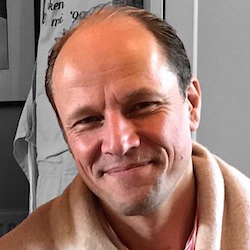By Carlos Maltzahn, CROSS Founder & Director / Adjunct Professor, Computer Science & Engineering, UCSC
On June 2, 2014, Scott Brandt, Sage Weil, and I met for dinner at a restaurant in Santa Clara. This turned out to be the beginning of CROSS.
Welcome to the Blog at CROSS. To start things off, I thought I share a bit of the history of CROSS. This is the first part of a series of posts that will be interleaved with posts of other CROSS members and guests. Our aim is to publish at least one blog post per week.
Back to what happened at that dinner on June 2, 2014. A month earlier Red Hat agreed to acquire Weil's startup Inktank for $175m. Inktank had formed in 2012 to drive widespread adoption of Ceph, a scalable, open source, software-defined storage system that runs on commodity hardware. It was 10 years since in 2004, Weil, then a UC Santa Cruz Ph.D. student on a summer internship at Lawrence Livermore National Lab, wrote the first lines of code of what would eventually become Ceph. Weil kept working on Ceph not only while in the Ph.D. program but also after he graduated.
At the dinner, Weil suggested that he would fund a "structure" at UC Santa Cruz that would allow other students to have a similar career as he had. I mentioned Andrew Shewmaker's idea of teaching an undergrad course on how to submit Linux kernel patches (for this he later received the prestigious 2015 Chancelor's Graduate Teaching Fellowship). Shewmaker's idea resonated with Weil and it became clear that Weil's vision had to do something with teaching students how to engage with large open source software communities. But the structure had to also find a way to enable students to continue working on their research prototypes after graduation and building developer communities around them. This structure became CROSS and Weil decided to fund it with $2 million.
One important question was whether graduated Ph.D. students want to stick around to build communities around their research prototypes instead of going off and making lots of money in industry. The day after the dinner, on June 3, 2014, I attended Jeff LeFevre's great defense on Physical Design Tuning Methods for Emerging System Architectures. A day later he dropped by during my office hours and I shared with him the idea of CROSS. LeFevre had already accepted a position at a startup but was immediatedly intrigued. Neither of us knew of course that on September 23, 2016 LeFevre would become the first CROSS incubator fellow with his project on "SkyhookDM: Programmable Storage for Databases."
Another important question was how to sustain CROSS. Centers can burn through $2 million in a hurry. From the beginning it was clear to me that CROSS needed to be sustained by members of industry, not only financially but also with their advice and guidance. In fall 2014, Senior Director for Business Development at Baskin School of Engineering Frank Howley and I hit the road, and over the course of the next 10 or so months pitched CROSS to companies easily over a hundred times. Brandt gave me advice that turned out to be essential: do not start CROSS until you have three companies signed on. This reduces the risk of early adopters and provide greater momentum at kickoff. On January 5, 2015 Toshiba America Electronic Components signed on. SK Hynix Memory Solutions and Micron follwed on June 30 and August 13 respectively. With these three founding members we had the kickoff CROSS IAB meeting on September 25, 2015.
This ends the first part. Stay tuned!


